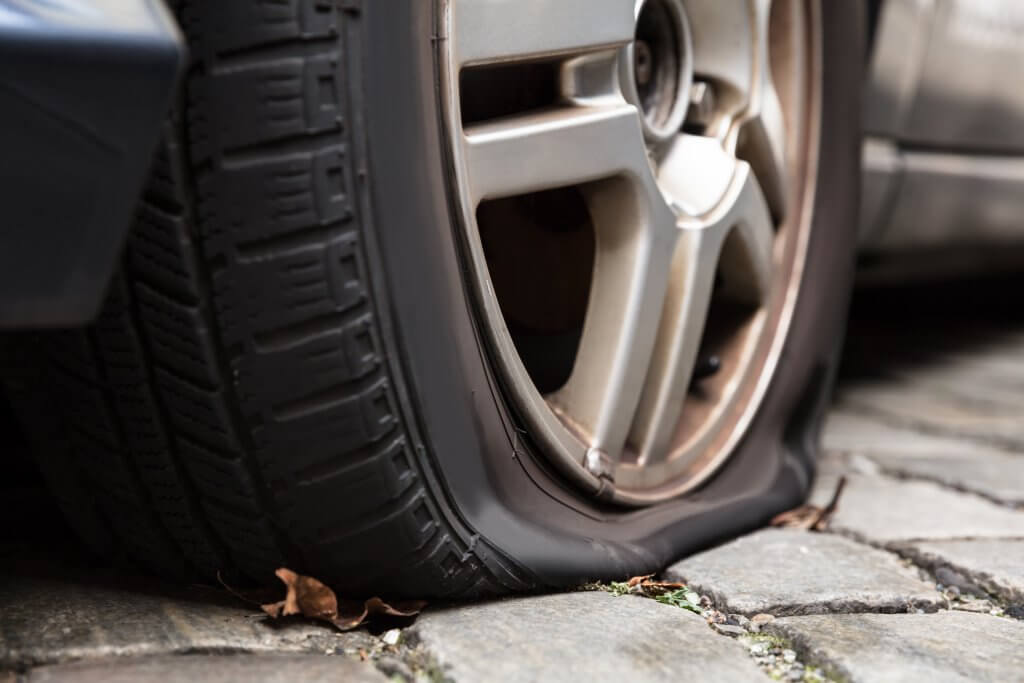by Damon Hildebrand
Aaron Fink/Demand Media
Tubeless tires hold air better, and last longer, than old fashioned tires with an inner-tube. With the exception of punching a hole in the tire by running over an object, or jumping the curb at the mall, tubeless tires generally hold up well. There are times, however, when a tire develops a leak between the wheel and rim. In this case, remove the tire to reseat the bead and reseal the tire.
Remove the tire from the car and lay it on a flat, hard surface with the valve-stem sticking up.
Fill the tire with air and spray soapy water around the outer edge of the rim where the tire meets it. The area of the leak is indentifiable by bubbles generated from leaking air. If one side of the tire shows no sign of a leak, turn the tire over and repeat the soapy water leak test.
Mark the leaking area of the tire with chalk.
Release the air from the tire by pressing inward on the valve-stem. If a valve-stem removal tool is available, remove the valve-stem needle by unscrewing it from the stem.
Turn the tire so the leaking side of the rim and tire face up.
Place one end of the 2 by 4 board on the rubber part of the tire, right next to the steel rim's edge. While holding the board in position, hit the board with the shop hammer to break the tire's bead loose from the rim. Once the seal breaks, the entire side of the tire will release from the rim.
Press the tire downward, away from the rim. Clean the inside edge of the rim with warm soapy water and a shop rag. Dry the area with a clean shop rag. Also, wipe the inner edge of the tire to clean any loose debris or dirt.
Place the needle back into the valve-stem and begin filling the tire with air. While air is flowing into the tire, pull up aggressively on the sides of the tire to mate the inner edge of the tire back onto the rim. When the tire touches the rim, air will fill the tire and continue seating itself along the rim.
When the tire touches the rim, air will fill the tire and continue seating itself along the rim.
Fill the tire to the desired air pressure. Recheck the tire for leaks with the soapy water.
References
Tips
Things You'll Need
Writer Bio
Damon Hildebrand is a retired U.S. Navy veteran. He has more than 15 years within the oil and gas industry in both technical and managerial positions. Hildebrand has been a technical writer and communicator for the last four years. He is a certified specialists in lubrication and tribology, as well as a certified maintenance and reliability professional.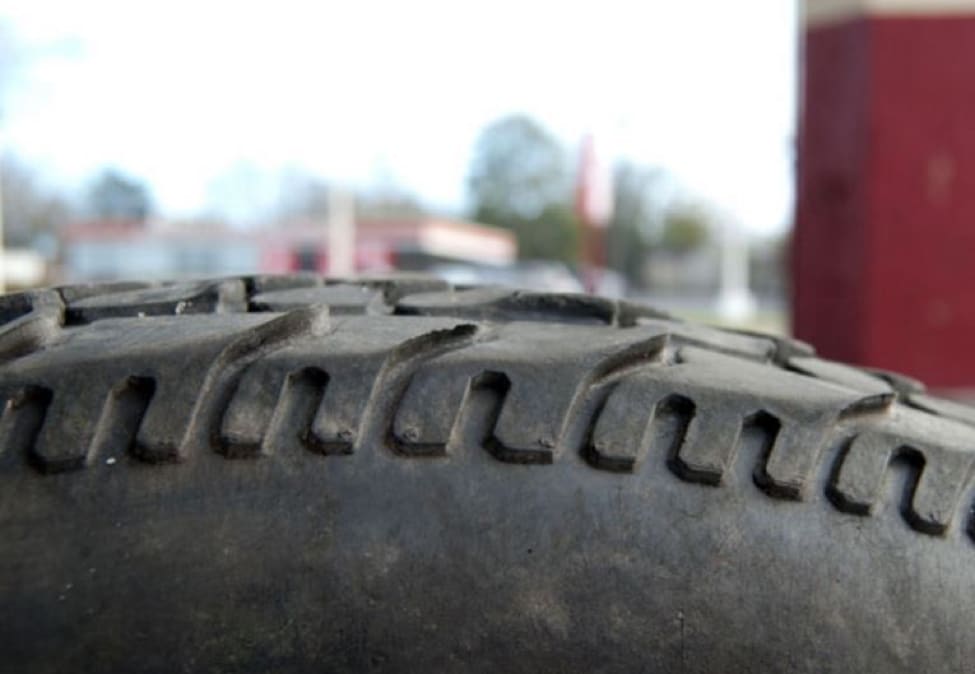
A slow tire leak is more than just a nuisance. A leak can lead to low tire pressure. Not to mention, prolonged running on an underinflated tire can lead to more extensive tire damage or even cause a dangerous blowout.
If you’re experiencing a slow leak, here are some things to look for:A tire puncture: It is a common misconception that a puncture will cause the tire to immediately go flat. However, in many cases the object that caused the puncture remains lodged in the tire and prevents the air from leaking out quickly. As with all tire leaks, it is important not to ignore a puncture. Eventually to object will either wear down and/or work its way out of the tire. For more on this read our article How to Repair a Tire with a Safe, Permanent Fix.
Wheel damage: Another common cause for slow tire leaks is damage to the area where the tire bead meets the rim.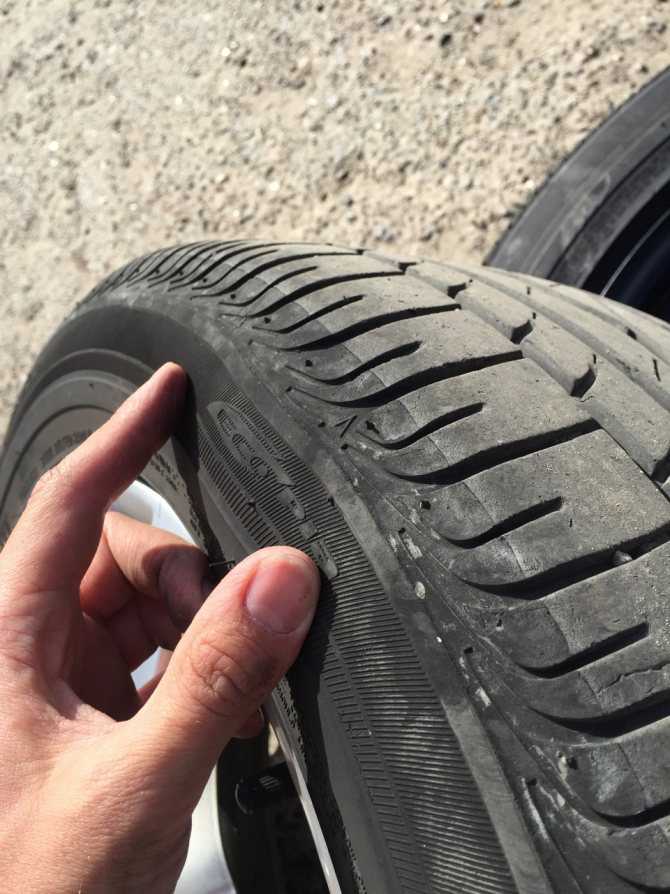 This type of damage is typically cause by the driver hitting the curb, taking a speed bump at high speeds OR those dreaded potholes! The impact deforms the wheel’s metal surface which may cause the tire to pull away from the mounting surface of the wheel.
This type of damage is typically cause by the driver hitting the curb, taking a speed bump at high speeds OR those dreaded potholes! The impact deforms the wheel’s metal surface which may cause the tire to pull away from the mounting surface of the wheel.
Valve stem damage: The third most common cause for slow tire leaks is worn out or damaged valve stems. Time, use and exposure to elements can cause your valve stems to wear out and cause leaks.
Diagnosing your tire leak:
If your vehicle is equipped with TPMS, you will know right away if you have a leak. If the sensor light on your dashboard goes off, you inflate all the tires back to proper pressure and the light goes back on a few days later – you likely have a leak. If your vehicle does not have TPMS, its important to check your tire pressure regularly.
Once you’ve identified that you have a leak, use TECH Chek to locate the source of your leak. Simply spray the product all around the tire.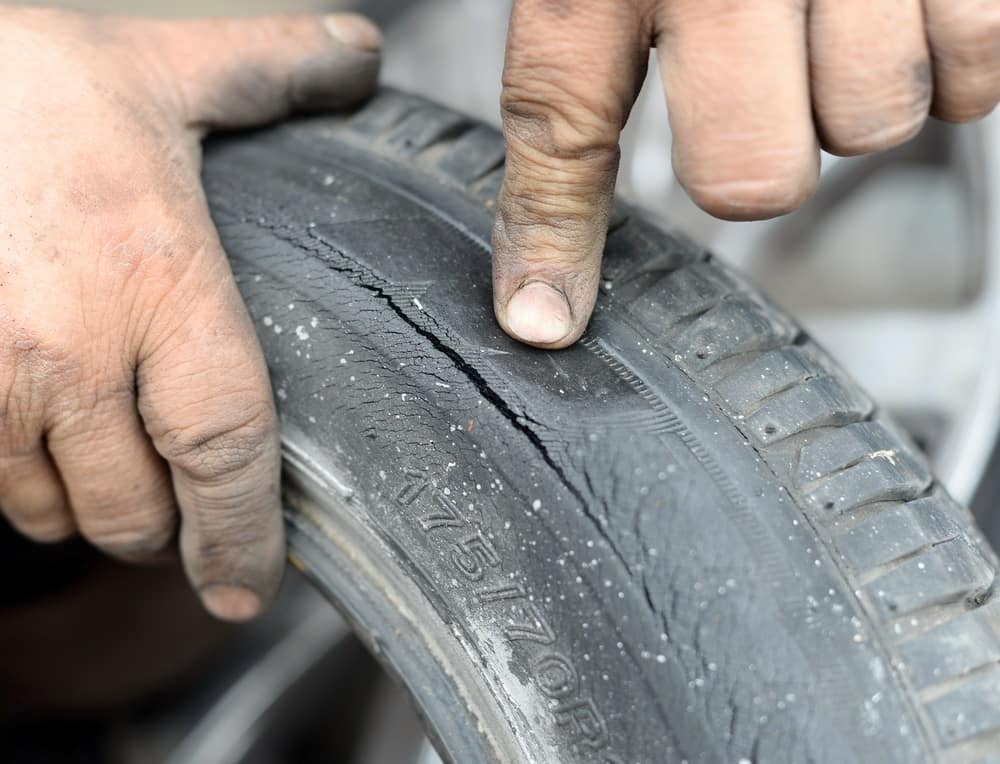 Where the surface of the tire begins to bubble is likely the source of your leak.
Where the surface of the tire begins to bubble is likely the source of your leak.
It’s important to have your tire diagnosed by a professionally trained tire shop or mobile tire repair service as soon as possible. In the case of a puncture, you may want to use a tire repair kit to keep your tire properly inflated until you can have it serviced. The leak should then be permanently fixed using a proper tire repair consisting of a cured rubber stem and repair unit.
If the leak is caused by a damaged valve, a trained tire technician can typically replace the valve at a minimal cost. In some cases, however, the tire may need replaced.
If the leak is caused by a damaged wheel, a tire technician may be able to reseat and seal the tire using a bead sealer. However, if the damage to the wheel is significant, unfortunately that means you may need to replace the wheel itself.
To read more about the types of damage that can and cannot be repaired, click here!
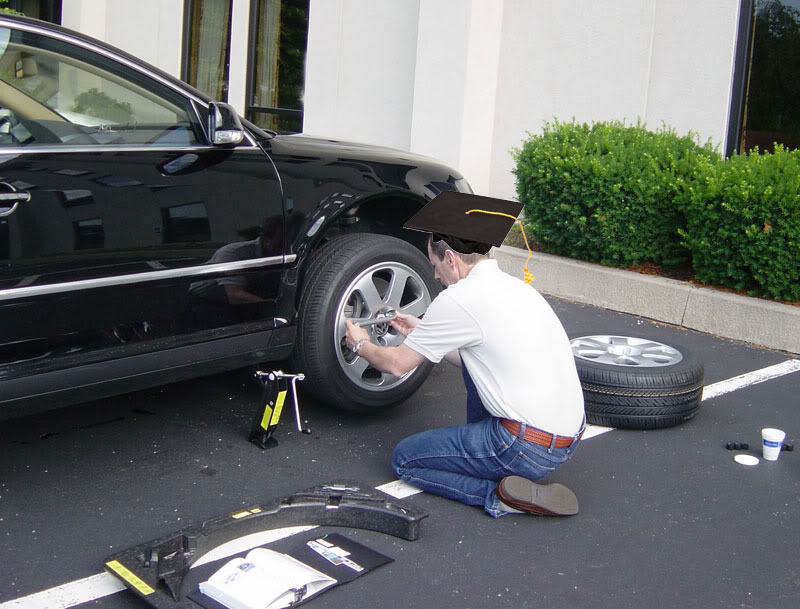 ru - car portal
ru - car portal Car forums are full of topical questions about the tire sealing process. Most car manufacturers have long abandoned tubes on tires, and a tubeless tire should not let in a single drop of air at the junction with the disc. After all, the depressurization of the rubber threatens both directly with its damage and the deformation of other elements of the wheel.
Many drivers advise colleagues to carry out the procedure on their own with the help of special tools, however, professionals insist that the effect of such manipulations will only be enough to get to the tire fitting without any problems and entrust the wheels to the master.
In vain do motorists not pay due attention to the wheels. Shinomontagpro site experts are sure that most accidents on the roads occur precisely for reasons related to the “shoes” of a car. Therefore, it is necessary to diagnose the vehicle in a timely manner and if even the slightest distance between the tire and the disk or an insufficient level of pressure is detected, immediately go to the specialists to solve the problem.
However, there are situations in which you need to act quickly, and there may not be a service station or tire service nearby. And only in this case it is worth being able to cope with the sealing of tubeless wheels on your own.
The first step is to choose the right sealant. The most popular silicone-based. Their goal is to instantly fill the cavities in the places of a tire puncture or its departure from the disk.
Now it's time to carry out the tire sealing procedure itself:
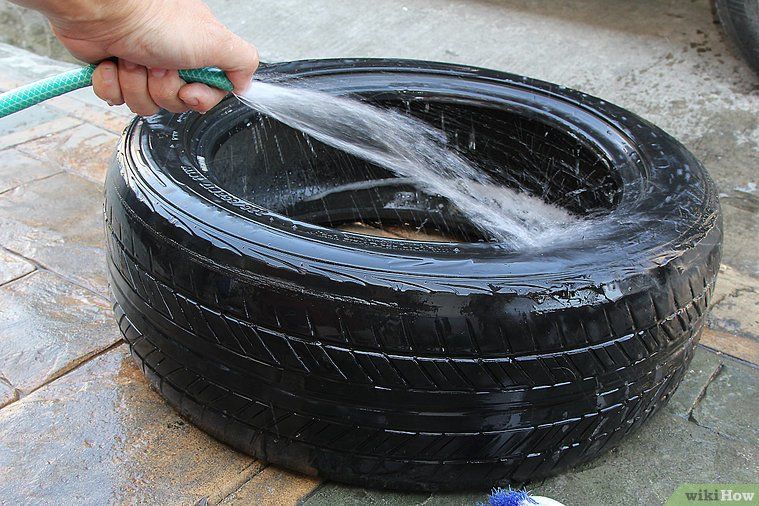 The right decision would be to place the product in the salon with the stove turned on. With normal equipment power, 15 minutes should be enough.
The right decision would be to place the product in the salon with the stove turned on. With normal equipment power, 15 minutes should be enough.
Every driver should have a can of sealant, as damage to a tire by a foreign object in the middle of the road is not uncommon. In order not to be helpless away from "civilization" and calmly get to the place where this problem will be solved, the sealing agent will come in handy.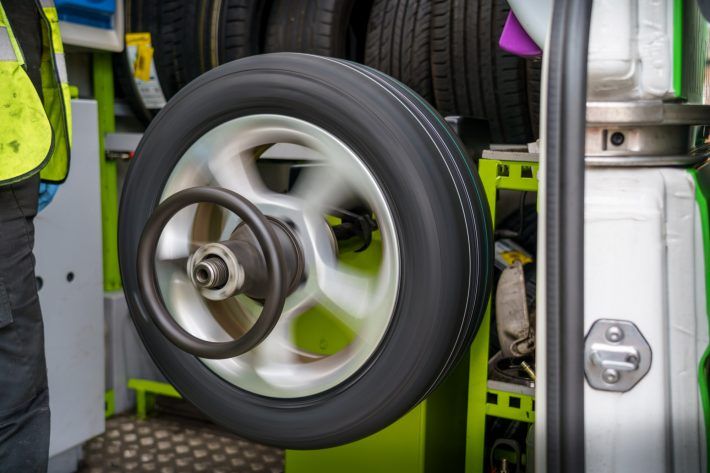 Of course, the owner of the car can carry a spare tire in the trunk, but a small spray can save a lot of space.
Of course, the owner of the car can carry a spare tire in the trunk, but a small spray can save a lot of space.
Unique tools have appeared on the modern market that prevent a sharp drop in tire pressure in case of serious damage, and small ones can be completely ignored. Such functions are performed by preventive sealants for tubeless tires.
They are based on a polymeric material that, in the event of an emergency deflation, fills the hole and prevents the possibility of an emergency. The procedure for applying the product is similar to conventional sealants. Before use, it is worth lowering the wheels in order to pump up the substance to the required level.
In addition to the main functions, the preventive agent also provides protection against oxidation and the aging process inside the tire.
The presence of sealant in the trunk of a car and the ability to use it will certainly help the driver out in an emergency, save money on calling a tow truck and nerves while waiting for someone to help.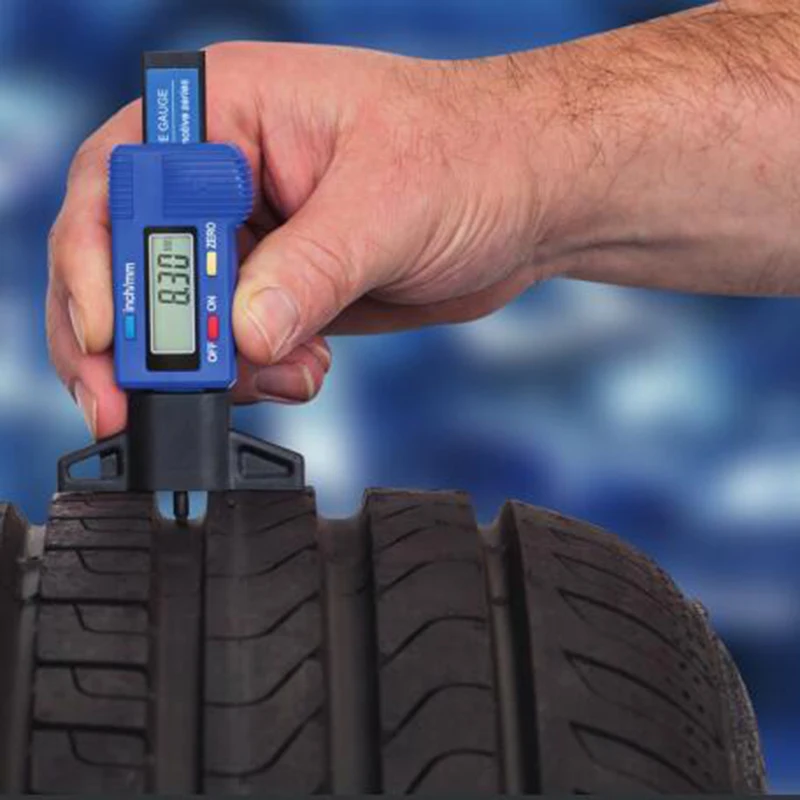 It is quite easy to operate, does not require special auto mechanic skills. However, even with the successful implementation of emergency sealing on your own, you need to be aware that in the near future you will have to turn to specialists. Working with tires requires special equipment and skills that are not found in a garage environment. A negligent attitude to the condition of the wheels often leads to accidents in which not only the vehicle suffers, but also the people moving in it.
It is quite easy to operate, does not require special auto mechanic skills. However, even with the successful implementation of emergency sealing on your own, you need to be aware that in the near future you will have to turn to specialists. Working with tires requires special equipment and skills that are not found in a garage environment. A negligent attitude to the condition of the wheels often leads to accidents in which not only the vehicle suffers, but also the people moving in it.
Main / Safety / Sealing tires
Tire sealing
The indicated prices are retail, buying more - possible discounts .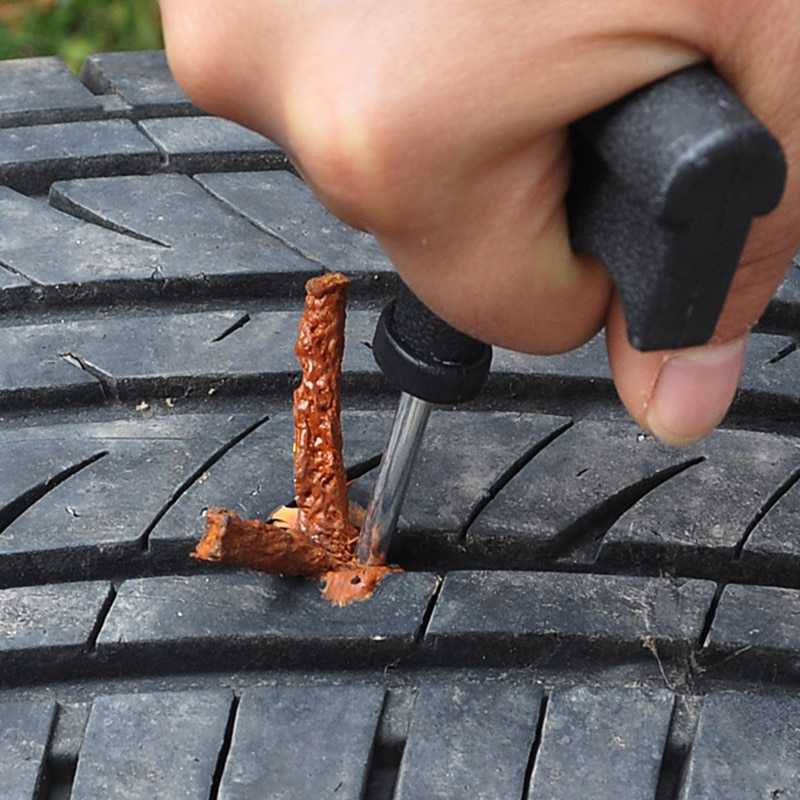 We ship goods to all European countries. Place the goods in the shopping cart and send a request, during the working day you will receive a response about possible discounts, payment terms and delivery time.
We ship goods to all European countries. Place the goods in the shopping cart and send a request, during the working day you will receive a response about possible discounts, payment terms and delivery time.
CheapestHighest priceMore importantBestsellers
€653.40 VAT included
More close Add to cart
Ultra-Seal Tire Sealant fills punctures as soon as they occur. The result is a reliable and durable repair without pressure loss. Tire sealant is the simplest and most cost effective solution to most puncture related downtime problems.
BENEFITS:
Fluid also coats tire edges
Fewer punctures and explosions
Enough for the life of the tire
Reduces tire heat
Extends tire life
Lower fuel consumption
Stops tire aging
Easy to clean with water
No frost
Performs balancing function
Does not affect tire warranty
Analogs: 500502
€30.25 VAT included
More close Add to cart
Ultra-Seal Tire Sealant fills punctures as soon as they occur. The result is a reliable and durable repair without pressure loss. Tire sealant is the simplest and most cost effective solution to most puncture related downtime problems.
The result is a reliable and durable repair without pressure loss. Tire sealant is the simplest and most cost effective solution to most puncture related downtime problems.
BENEFITS:
Fluid also coats tire edges
Less punctures and explosions
Enough to last tire life
Reduces tire heat
Extends tire life
Lower fuel consumption
Stop tire aging
Easy to clean with water
No frost
No pollution
Performs balancing function
Does not affect tire warranty
Analogs: 500503
€211.75 VAT included
More close Add to cart
Analogs: 3610045
€266. 20 VAT included
20 VAT included
More close Add to cart
Tire sealant seals the tire from the inside and eliminates punctures.
Analogs: SF13330
€15.00 VAT included
More close Add to cart
Tire sealant seals the tire from the inside and eliminates punctures.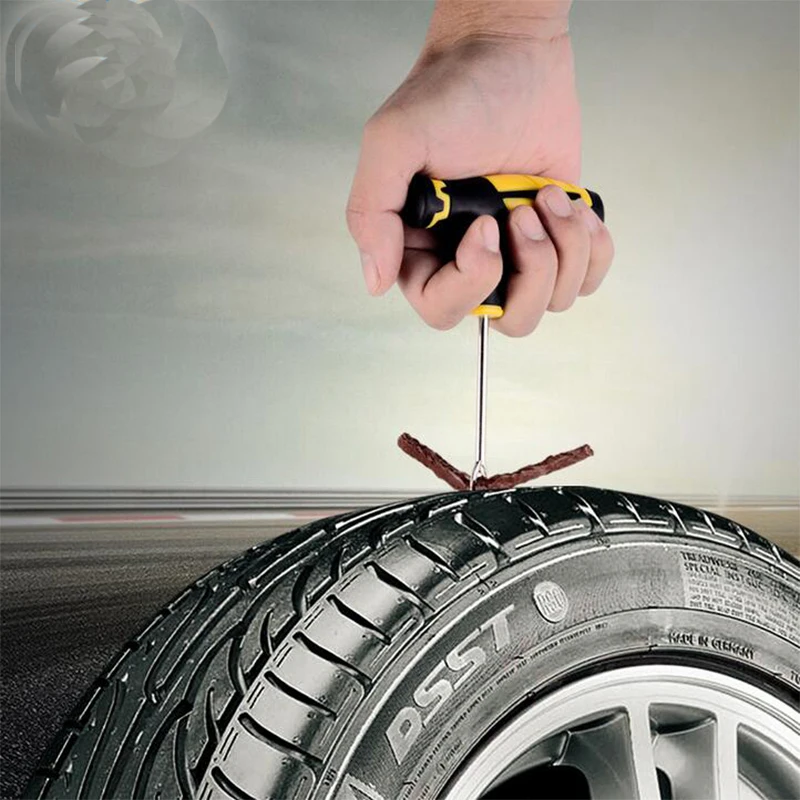
Analogs: SF13331
€113.44 VAT included
More close Add to cart
0.25l / Press
Analogs: SF18348
€83. 19 VAT included
19 VAT included
More close Add to cart
Analogs: SF20400
€6.05 VAT included
More close Add to cart
Analogs: 20450
€1. 69 VAT included
69 VAT included
More close Add to cart
Locks wheel nuts, protects against loosening.
Analogs: 3033
€15.13 VAT included
More close Add to cart
Analogs: 49121
€37.